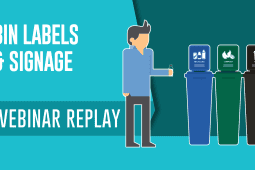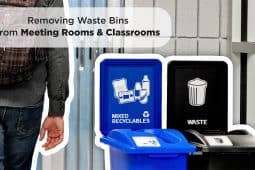The population of the world is constantly growing and developing at a rapid pace. Environmentalists warn that we are taking from Mother Nature far more than we are giving back to her. A clear indication that we need to take action is in the landfill space dilemma. Landfills are becoming more and more weighted down by our garbage. The amount of garbage filling our landfills far exceeds the rate of decomposition. The result for some communities are that the landfills have had to shut down because they are simply too saturated and filled to their capacity.
For most of us, we think to ourselves “well I already comply with municipal regulations. I’ve cut my garbage down and increased my recycling efforts and that is good enough”. If you do not have a composting program already in place in your household than you really could be doing more to divert your household waste.
I know what you are thinking; “You want me to consider a compost program? Why would anyone want to deal with rotting food, let alone deal with rotting food in their kitchen?” The thought of adding that extra bit of work to our load is less than to be desired. But what if there was an easy way to make composting part of your daily routine? What if through your composting efforts you would be reducing the impact you have on your local landfill and at the same time seeing results of its nutrient contents?
Setting up an effective Composting Program for your home is easy! It’s a matter of selecting the right containers for the job and placing them in an area that is accessible for you and other members of your household to participate. You can find lists of acceptable food waste for your compost container that you can post near or on your composter as a visual reminder. Eventually, composting will become an easy habit to practice on a routine basis.
For the average household, a compost pail for the kitchen and a large compost container for outside should be a given. Having a pail in your kitchen is great as it limits the amount of food waste being stored which decreases the chances of any odour. Filters work great at eliminating odours as well so select a compost pail that provides you with this option. It should also have handles so that once filled, transportation from the kitchen to your outdoor composter is easy. So easy that even children and seniors can help out with your efforts. A compost pail with rounded corners will make it easier to clean and maintain and prevent build up in the corners eliminating the concern of mould.
When it comes to your outdoor compost container, pick a size and shape that can fit easily against the side of your house or in your backyard (square containers work best). Select a compost bin that offers a lockable lid to prevent animals from getting into your organic waste.
Once you have your composters in place, the rest is pretty easy. Composting is low maintenance with many benefits from your efforts:
– Your organic waste acts as a natural fertilizer that will save you money and sustain the health and vibrancy of your garden
– Using compost soil instead of chemically enhanced products protects your family and pets from exposure to pesticides.
– You can get your children involved. The Vermi-Composter is a fantastic way to encourage your children to participate in your composting program. What child isn’t fascinated with dirt and worms?
– You can use your compost as mulch which minimizes the occurrence of weeds on your lawn.
No matter what reason motivates you to start a compost program in your home, the most important role that your effort will play is that it will decrease your contribution to your community landfill waste. Composting = Another step towards saving our planet.
by Tammy-Ann Chapman







